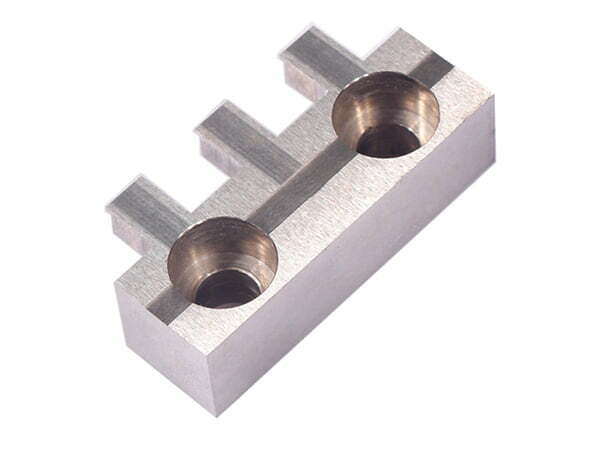Plastic mold parts are a tool for producing plastic products; they are also the tools that give plastic products their complete structure and precise dimensions. The structure form of plastic mold parts and mold processing quality directly affect the quality of plastic products and production efficiency. Plastic mold parts production and plastic products production practice in the most common, the most commonly occurring plastic mold parts failure causes and their troubleshooting methods are detailed as follows.
1, the gate off material difficulties. In the injection process, the sprue stick in the sprue sleeve, not easy to take off. When the mold is opened, the product is cracked and damaged. In addition, the operator must use the tip of copper rod to knock out from the nozzle to make it loose before demoulding, which seriously affects the production efficiency. The main reason for this failure is the poor finish of the conical hole of the gate and the knife marks in the circumferential direction of the inner hole. Secondly, the material is too soft, and the small end of the cone hole is deformed or damaged after using for a period of time, and the arc of the nozzle sphere is too small, resulting in the riveting head of the sprue material here. The tapered hole of the sprue is difficult to process, so standard parts should be used as much as possible, if you need to process it by yourself, you should also make your own or buy special reamer. The tapered hole should be ground to Ra0.4 or more. In addition, the gate pulling rod or gate ejecting mechanism must be set.
2、Guide column damage. The guide pillar mainly plays a guiding role in the mold to ensure that the molding surfaces of the core and cavity do not touch each other under any circumstances. In the following cases, injection, the fixed mold will produce a huge lateral offset force: (1), the plastic wall thickness requirements are not uniform, the material flow through the thick wall at the rate of large, where a large pressure; (2), the side of the plastic asymmetric, such as step-shaped parting surface of the mold on both sides of the opposite side of the counter pressure is not equal.
(3) Large molds, due to different charging rates in each direction, as well as the influence of the mold's self-weight when loading the mold, resulting in dynamic and fixed mold shift. In the above cases, the lateral offset force will be added to the guide column during injection, and the surface of the guide column will be stretched and damaged when the mold is opened, and in serious cases, the guide column will be bent or cut off, or even unable to open the mold. In order to solve the above problems in the mold parting surface to add a high-strength positioning key on each of the four sides, the most simple and effective is the use of cylindrical keys. The perpendicularity of the guide pillar hole and the parting surface is very important, in the processing is to use the dynamic, fixed die alignment after clamping, in the boring machine once boring, so as to ensure the concentricity of the dynamic, fixed die hole, and make the perpendicularity error minimum. In addition, the guide pillar and guide bush heat treatment hardness must meet the design requirements.
4、Bending of dynamic mold plate. When the mold is injected, the molten plastic in the mold cavity produces huge counter pressure, generally in 600~1000kg/cm. Mold makers sometimes do not pay attention to this problem, often change the original design size, or the dynamic template with low-strength steel plate instead, in the mold with the top bar top material, due to the large span between the two sides of the seat, resulting in injection when the template down bending. Therefore, the moving template must use high-quality steel, to have enough thickness, do not use A3 and other low-strength steel plate, when necessary, should be set up below the moving template support column or support block, in order to reduce the thickness of the template, to improve the bearing capacity.
5, the top bar is bent, broken or leaking material. Homemade top bar quality is better, that is, the processing cost is too high, now generally use standard parts, poor quality. Top bar and hole clearance if too large, there is leakage, but if the gap is too small, in the injection due to the rise in mold temperature, the top bar expansion and jamming. What's more dangerous is that sometimes the ejector rod is ejected out of the general distance and can't be ejected and broken, as a result, this exposed section of the ejector rod can't be reset and hit the concave mold when the mold is closed next time. In order to solve this problem, the top bar is resharpened by keeping a 10~15mm mating section at the front end of the top bar and grinding the middle part smaller by 0.2mm. All the top bar in the assembly, must be strictly checked from the fit clearance, generally within 0.05 ~ 0.08 mm, to ensure that the entire ejector mechanism can enter and exit freely.
6, poor cooling or water leakage. Cooling effect of the mold directly affects the quality of products and production efficiency, such as poor cooling, product shrinkage, or shrinkage is not uniform and warped surface deformation and other defects. On the other hand, the mold as a whole or local overheating, so that the mold can not be formed properly and stop production, serious cases so that the top bar and other moving parts of thermal expansion jammed and damaged. The design of the cooling system, processing to product shape, do not because of the complex structure of the mold or processing difficulties and omit this system, especially large and medium-sized mold must be fully considered cooling problems.













